
“We can’t plan for a future without looking at where we are now. And where we are now is in a city of cars.” — Cathy Tuttle, PhD
The city of Portland ostensibly wants people to start driving cars a lot less, and fast. The Portland Bureau of Transportation’s Bicycle Plan for 2030, finalized in 2010, conceived of a future in which 25% of all trips around Portland were done by bicycle. With 8 years to go to reach this goal, we haven’t been doing very well.
Could part of the problem be that we’re making master plans for the wrong things?
In a recent Friday Transportation Seminar presentation hosted by Portland State University’s Transportation Research and Education Center, longtime urban planner and local bicycling advocate Cathy Tuttle, PhD spoke about the importance of a “Car Master Plan”: a.k.a., a plan for making cities less car-oriented that actually focuses on the subject in question: the cars themselves, and the people who drive them.
Tuttle said American cities, including Portland, have a plethora of master plans for things like walking, biking, transit and freight, and all of them are written in response to cars.
Advertisement
“Right now, the car is the default design vehicle and car drivers are the default road users of all transportation plans. We plan all transportation – whether it’s bike, pedestrian freight or transit – from a car perspective,” Tuttle said in the presentation.
In order to shift the paradigm, Tuttle said cities need to acknowledge the impact cars have on cities, focusing on them the same way they focus on other mode types. Tuttle has written a Car Master Plan for Downtown Portland, which she shared during the presentation Friday. It’s a very deep dive into the history and culture of car dominance in the United States and the Portland area specifically, presenting complex ideas in a uniquely accessible way and making concrete suggestions for giving cities a car detox.
Although Tuttle has decades of experience in urban planning, she said she was surprised by some of her findings while writing this plan. Some of these surprises include how much money people in Oregon spend on their cars (an astonishing $40 billion), the fact that so-called “entitled drivers” often receive little to no punishment even if they kill someone while driving a car and just how much carbon a single gallon of gas will emit into the atmosphere when burned in a car’s gas tank.
Tuttle’s exploration into the “four types of Portland drivers” (above) was an especially fascinating element of the presentation. This theory was inspired by Portland Bureau of Transportation Bike Coordinator Roger Geller’s theory of the four categories of Portland cyclists, which he developed in 2006.
The reason Tuttle’s description of these archetypal Portland drivers (illustrated below) is so interesting is because, unlike some other elements of urban and transportation planning, most people in the U.S. have likely formulated a strong opinion about this topic – if only subconsciously.
In Tuttle’s presentation, which you can watch here, she elaborates on these four car driver types, providing recognizable stories about who these people are. For instance, Tuttle said the “Habitual Driver,” a type of car driver who drives mostly because it’s convenient, makes up about 30% of the general population.
Advertisement
Tuttle says the “Habitual Driver” is the reason MAX stations, schools, parks, grocery stores, coffee shops, gyms, and churches are surrounded by acres of free parking, and why residential streets are lined with cars.
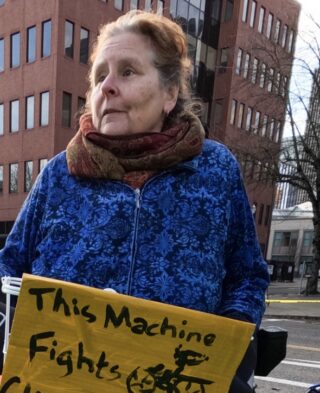
Tuttle’s plan also includes detailed information about Portland’s streets – the nitty-gritty engineering logistics of them, how much it costs to maintain them for cars and just how much space they take up.
She also talks about cars themselves – what they’re made of, how much they cost, their growing potential to kill as they’re manufactured larger and larger and their secured place the American status symbol.
“Cars are sex symbols, imbuing their owner with glamour. Cars are security devices, keeping families safe as they get to the next soccer practice. Cars are places to be alone, blasting music on the open road. Cars are cute, rugged, professional, menacing, powerful. Cars are just expensive metal boxes that dominate our shared public space,” Tuttle writes in her report.
Ultimately, Tuttle’s plan provides a roadmap for seeing Portland, and cities across the country, through a radically different lens than the car-dominant one most people are used to.
“Why make a Car Master Plan? So we can see cars. We don’t see what we don’t measure,” Tuttle writes. “We can’t plan for a future without looking at where we are now. And where we are now is in a city of cars.”
The presentation goes into more detail about the intricacies of car culture and how it affects Portland on every level, and she also has a set of recommendations (below). The slides are available here, and you can learn more about Tuttle by listening to our podcast interview with her from earlier this year.
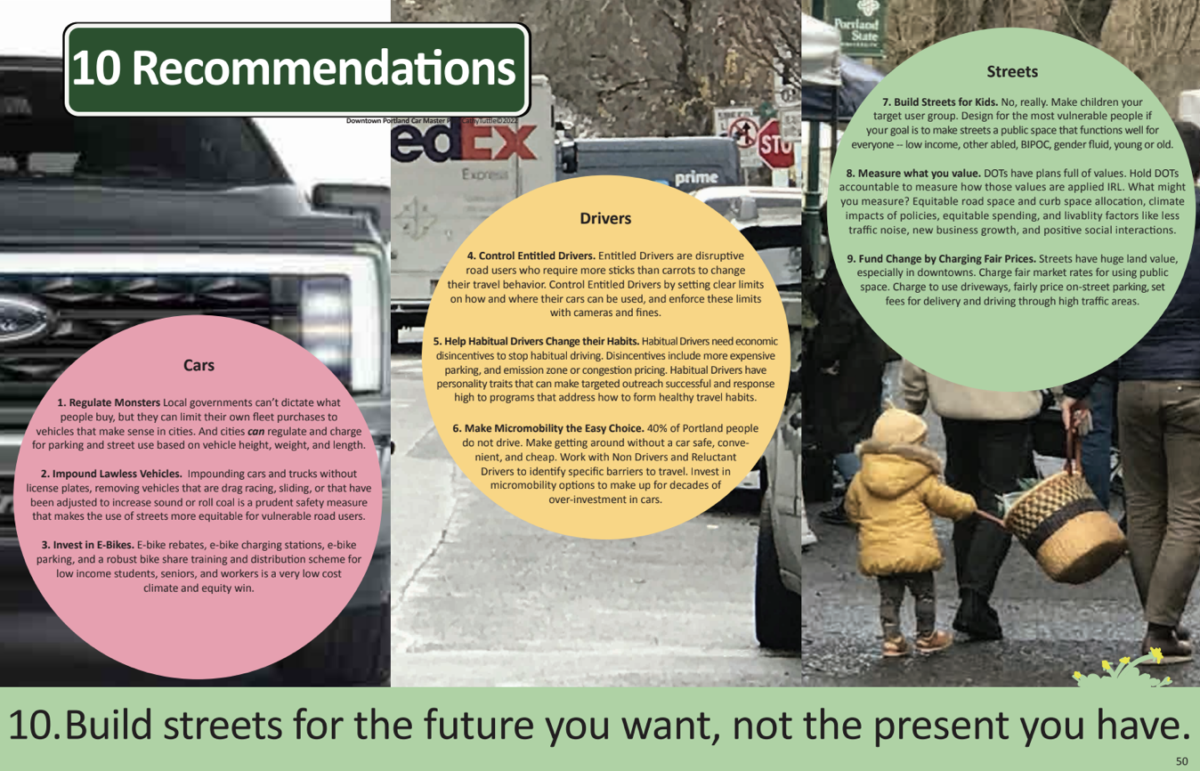



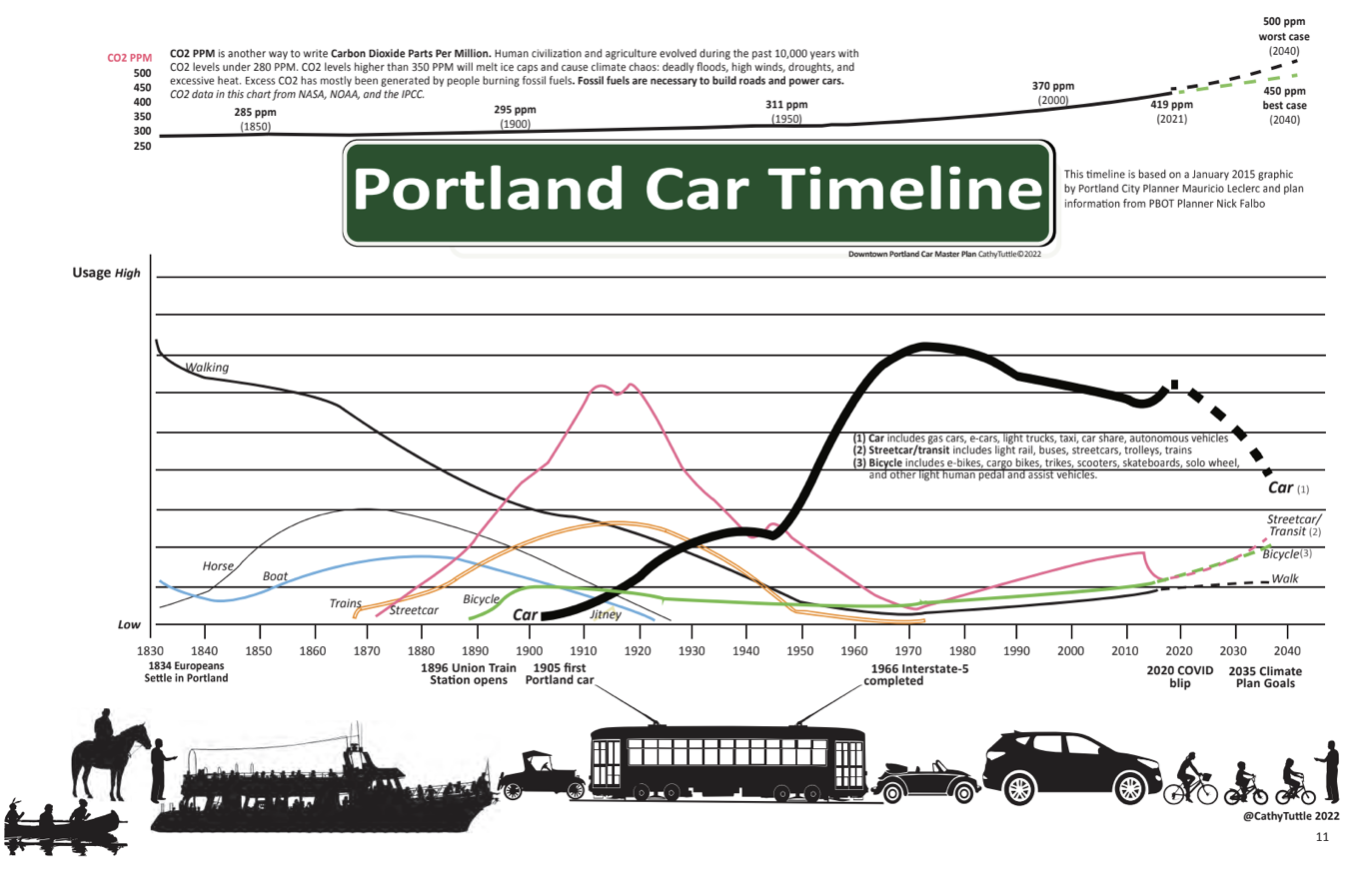

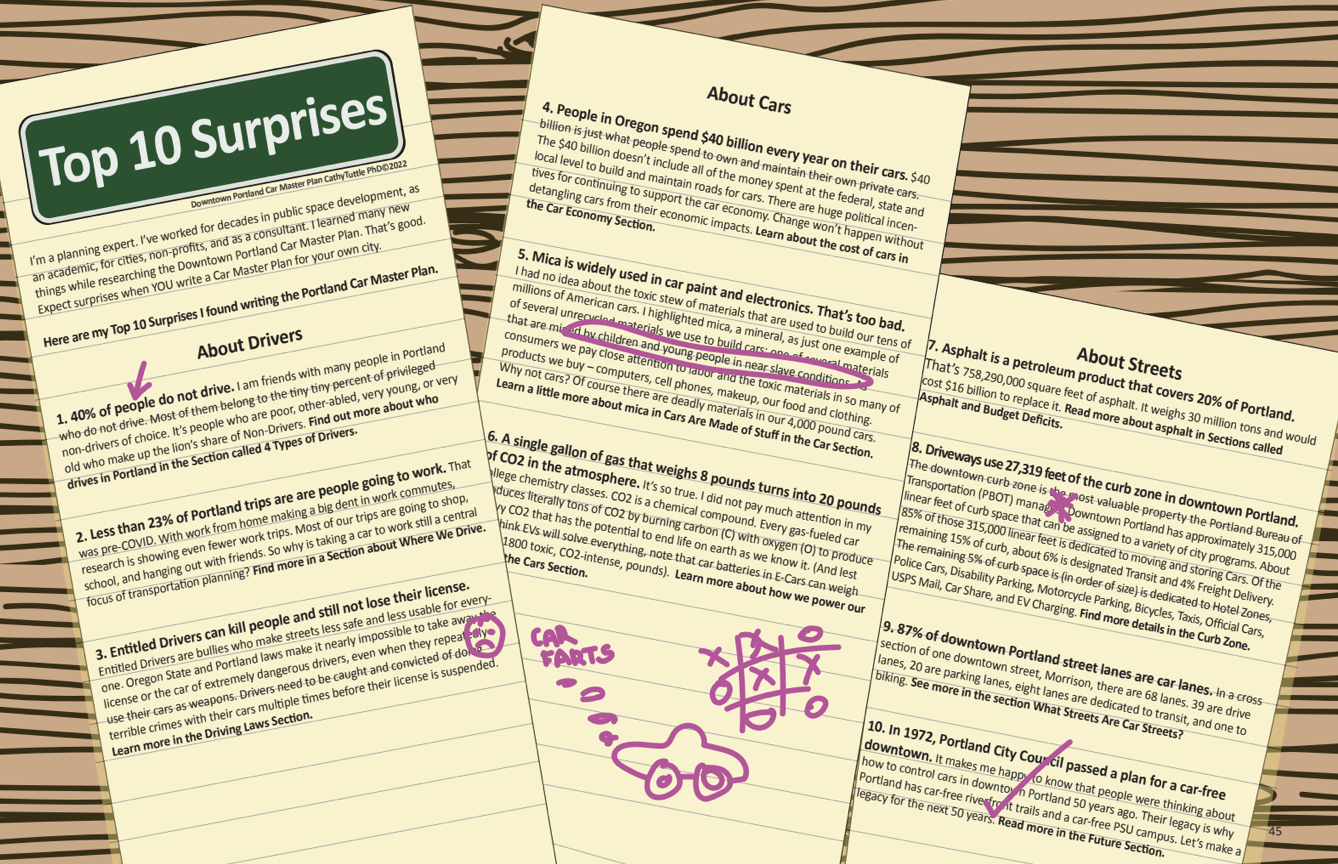


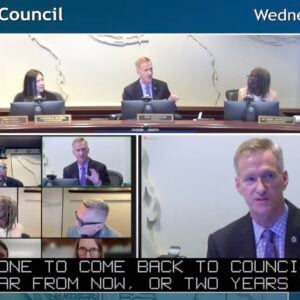
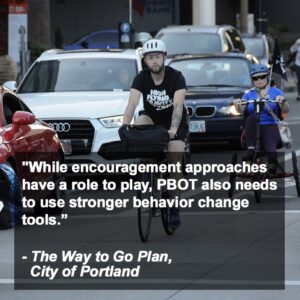
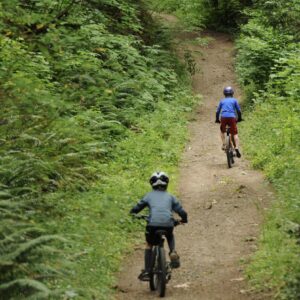
Thanks for reading.
BikePortland has served this community with independent community journalism since 2005. We rely on subscriptions from readers like you to survive. Your financial support is vital in keeping this valuable resource alive and well.
Please subscribe today to strengthen and expand our work.
The City of Portland has been trying to get people out of their cars since the early 1970s (maybe even earlier) and has had little to no success.
I wish Tuttle all the success, but I won’t hold my breath.
Why did you even bother to write this comment? It adds nothing to the discussion while detracting from a very informative and approachable presentation. It’s a net negative, a pessimistic waste of time and space that pushes more attention-worthy comments further down the page.
For this psychic vampirism, I nominate you for the Anti Comment of the Week.
Because when I read the article that was what came to mind.
Glad you got such a kick out of it. Enjoy your day.
I hope PBOT and electeds are paying close attention to Cathy’s valuable and innovative idea of a ‘car master plan’. Until we recognize the sheer scale of car dominance (as Cathy lays out) we will never be able to do the urgent working of reprioritizing our streets for people.
Agreed.
Additionally I’ve found people always ask what I do if I break down when riding. Never had that question as a driver despite being much more able to “fix and continue” when on a bike than in a car. So I would add “What back up transit do I have should I break down catastrophically?” to your list of considerations.
In Portland, any attempt to make driving more expensive or annoying is just an austerity measure. Given the current state of Portland, people are going to prefer moving about in a private armored bubble, and if you make that impossible, people will just leave to the burbs or smaller cities in the state, as they already have been doing since 2020. It’s not as if Portland adds much value over other towns within an hour radius, which now have all the Portlandia type restaurants and pubs that were once exclusive to the city proper.
Fewer people are biking in Portland now than in decades in spite significant buildout of new infrastructure. Portland’s current state is far less like Copenhagen than it is like…say, Mad Max or a zombie movie. In the actual existing version of Portland (as opposed to the utopian ideal), people are going to want to armor up. It’s not 2009 anymore. Downtown is now economically irrelevant (meaning transit doesn’t serve a common destination), and public space is far too dicey for people to want to either be trapped in a container with strangers or be vulnerable on a bike. That said, I’m sure Portland will continue down its present course and people will find increasingly fewer reasons to stay.
Sorry but this is ridiculous point of view. (Except for the fact that far too many people seem to share it.) Portland is still safe and pleasant. I know this because I bike all around the city for fun and it’s still just as enjoyable as ever. Yeah some things are a bit worse and could be improved. But the problems have been exaggerated so much that it’s like some people are living in an alternate reality.
That’s only because Portlanders build up a tolerance to it. It becomes very apparent, however, when you finally move away, and then make a return visit to take care of business, which I’ve unfortunately had to do repeatedly since I left. Hopefully less so in the future. I hate Portland.
Let me know where I can move to in the US to have a better urban street recreational biking experience. Seriously interested.
I moved to Bend. I think street biking is actually far less dicey here, but I’ve stopped doing it. After 20 years of bike commuting, I’m kind of over it, to be honest. It’s not that interesting or practical and it’s just easier to get stuff done with a truck. Off-road/mountain biking only for me from now on – it’s much more engaging and fun, and you don’t have to worry about getting hit by cars.
Agreed that commuting is not that fun (no matter how you do it, really) but for me, biking around on quiet semi-urban neighborhood streets is one of the things I enjoy most in life. And my 1yo baby loves it too. Less than 1% of the time I’m out biking can I even see a homeless tent, let alone anything worse. So I’m pretty sure this is the right place for us. And of course other places are the right places for other people.
I would add “easy to navigate” to the list. I have become hesitant to go somewhere on a dark/rainy night if it is not on a regular route. So many of Portland’s bike routes are not simple and direct, and the bike signs/street signs are no illuminated by my generator hub/light with a cut-off so even if I memorize the streets to turn on instead of following the infrequent greenway signs, I often cannot read the street signs.
I second this. I’ve missed turns on the 20s bikeway more than a couple times. When I went back to investigate I noticed that one of the sharrows was mostly covered by a parked car. In my opinion there should be a giant sharrow with a right or left turn symbol right smack in the middle of every intersection where a turn is required.
Agreed, the first time I rode the 205 path south of Lents I got completely confused at 92nd. I ended up riding all the way down 92nd to Sunnyside as a result. In the dark & rain the signs just did not help me get back on the path under the overpass.
The price elasticity of gasoline consumption is very studied, and reviewing those studies tells us more than what we “think” from our gut.
A recent study found the price elasticity of gasoline is -0.25 to -0.37. That is, for
every % price goes up, demand decreases by 0.25 to 0.37%.
And focusing on the worst possible circumstance for biking (other than a very windy or icy day) isn’t very critical. Let’s focus on the 85% of the time it’s not rainy and want to get somewhere (Roger Geller once found he could shift the time of his commute a bit and almost never had to bike during medium/heavy rain – while it rains on many days, it’s sporadic and often pretty light).
I challenge readers of BikePortland to see if they and their households can achieve SOV use of less than 42.5 percent on a long-term basis. I probably did for a few weeks or a few months at a time when the weather was good; but I certainly backslid during the winter months. My work trips were by bike year round, but I wimped out on lots of other trips. The addition of children to the household changed the equation, too. Not only did that change the number of trips, but it changed the importance of time and schedule.
If the dedicated cyclists reading BikePortland can’t achieve the target mode share, I don’t think the community as a whole has any chance of dropping SOV use to less than 70 percent and even that would be a big lift.
Getting SOV trips to under 42.5% isn’t particularly difficult for most Portlanders. I walk for most trips, ride for trips that are close-ish and I need to do them quickly, and then drive for stuff that’s farther away or I need to haul something.
The biggest obstacle to biking more for me is that 1) Portland isn’t a safe or comfortable place to ride a bike and 2) I don’t want to ride a bar bike 8 miles one-way. I have nicer bikes but Portland is completely unsafe to leave any nice bike unattended for very long.
I think the bicycle trip aspiration is a little absurd. If we really want to move away from SOVs, public transportation should be our backbone and the accentuated with walking and biking on both ends of trips.
I see a huge correlation between number of cars in a household and bike mode share. Take someone who has lived car-free for years and suddenly give them a car; after that decision is made, they’ll start using the car, and consequently bike much less. The same argument can be made for one car vs two car households. Eliminate a car and the transportation choices change overnight. Maybe it means get an e-cargo bike, or maybe it means finding doctors and places of entertainment that are closer to home, but when we can’t drive we find a way to make biking, walking, and transit work.
Simple. Oh, wait – I haven’t been the sole occupant of a motor vehicle in at least …. 30 years (I rented a truck when we moved that time, and I was the sole occupant while I drove the stuff over).
You’re on, J_R! I’m going to keep a list of trips for the next month and see how they stack up. I own a car, two e-bikes, and two regular bikes, and I also walk and take the bus, so we’ll see if I can get under 42.5% for car use.
JM, it would be great if BP or Bike Loud (or someone) could organize a “25% challenge,” or what ever you want to call it.
This report is fantastic and anyone who commented in this thread without reading it should have their comments deleted until they atone.
I agree, Tony. These people should have to cycle up NW Newberry Rd to Skyline – TWICE – and then they can be allowed to comment again. 🙂
That’s a great plan, but there are so many difficult and expensive places the city needs to tackle outside the core to make bike trips more popular. I know my neighborhood in SW PDX is riddled with expensive gaps the city keeps avoiding, but they’re not going to reach these goals until they link these neighborhoods together.
I love this! Thanks Cathy for all of your hard work that went into this. I know this took extreme amount of time and dedication to get this plan together! Imagine how much money PBOT would spend to put something like this together on their own… I hope they take this any apply it into their programs and strategies.
As for some people’s comments about recommendation #5: we live in a capitalist economy. When we price services like roads, parking lots, and all other car based infrastructure specifically to car-users, we all win. We can’t let driving be the ‘catch all’ because we cant avoid paying for it as its subsidized by everything else we consume. Using these added fees can help fund alternatives we all scream we need before we give up our cars. More frequent transit, safer bike lanes, a complete network of both, etc.
With a focus on equitably applying these costs, we can make sure no one is losing mobility while we balance the scales to the mode split we desire and the mode split our climate needs.
TL;DR: the ‘101’ of PBOT’s Pricing Options for Equitable Mobility (POEM).
I didn’t watch Cathy’s presentation but I did read her ten recommendations and I think she has done a valuable service.
One recommendation – perhaps addressed elsewhere in her presentation (please let me know) – I would add is that political leaders CONSTANTLY should emphasize the ways in which automobile use is exacerbating the climate catastrophe.
Cathy’s handy graph shows the inexorable rise of automobile use from 1900 to the present day. The “Good Roads” movement was all about bringing better transportation to people, and it succeeded, but the cost was too high. We need political leaders who can start telling this story in a way that will resonate with people and motivate them to change their transportation choices.
I thought, for example, that when Putin’s army invaded Ukraine, political leaders would say, “Cut down on driving to undermine Putin and support Ukraine! (less demand for oil = less money for petrostates like Russia). But did anyone say that? Nope.
We need individuals to change their way of thinking about driving, so it’s ultimately a sociological challenge.